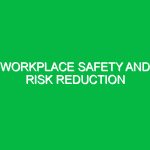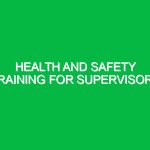Introduction
In the landscape of industrial operations, the term “Safety Procedures for High-Risk Industries” resonates profoundly. It encompasses a framework designed to protect workers from the multitude of dangers they face daily, particularly in sectors such as construction, manufacturing, oil and gas, and mining. These industries are often characterized by hazardous environments where the potential for accidents is significantly elevated. With increasing emphasis on Health, Safety, and Environment (HSE) compliance, establishing robust safety procedures is not just a regulatory requirement but a moral imperative.
Implementing effective safety procedures ensures that workers return home safely to their families, and it can also enhance productivity and morale within teams. The importance of these procedures cannot be overstated; they are the backbone of risk management strategies that save lives and prevent injuries.
Identifying Hazards and Risks in High-Risk Industries
Before delving into safety procedures, it is crucial to identify the potential hazards inherent in high-risk industries. These hazards can be classified into several categories:
1. Physical Hazards
Physical hazards include machinery, tools, and equipment that can cause injury or illness. For instance, in the construction sector, workers often use heavy machinery such as cranes and bulldozers. A lack of proper training or failure to follow operational protocols can lead to severe accidents.
2. Chemical Hazards
Exposure to hazardous substances is a significant risk in industries like manufacturing and chemical processing. Chemicals can cause respiratory issues, skin problems, or even long-term health effects. For example, workers in paint manufacturing may be exposed to volatile organic compounds (VOCs), necessitating stringent control measures.
3. Biological Hazards
Certain industries, such as healthcare and agriculture, may expose workers to biological agents like bacteria, viruses, and fungi. Adequate personal protective equipment (PPE) and hygiene practices are vital in mitigating these risks.
4. Ergonomic Hazards
In sectors like warehousing and logistics, repetitive movements and awkward postures can lead to musculoskeletal disorders. Ergonomic assessments can help design workplaces that minimize these risks.
5. Psychological Hazards
High-pressure environments often lead to stress and mental health issues among workers. Companies should foster a supportive culture to address psychological well-being.
Safety Precautions and Best Practices
Having identified the hazards, it is essential to discuss the safety precautions and best practices that can mitigate these risks effectively.
1. Comprehensive Training Programs
Training is the cornerstone of any safety procedure. Employees should receive thorough training tailored to their specific roles. For example, an oil rig worker must understand not only how to operate machinery but also how to respond in emergencies. Regular refresher courses ensure that knowledge remains current.
2. Use of Personal Protective Equipment (PPE)
The proper use of PPE is non-negotiable in high-risk industries. This equipment includes helmets, gloves, goggles, and respiratory protection. Companies should enforce stringent policies regarding PPE usage and ensure proper maintenance and replacement of worn-out gear.
3. Regular Safety Audits and Inspections
Conducting frequent safety audits helps identify potential hazards before they lead to incidents. For instance, a construction site should be inspected daily to ensure that safety barriers are in place and that tools are stored properly. Documentation of these audits can provide valuable insights into areas needing improvement.
4. Emergency Preparedness Plans
Every high-risk industry must have a well-defined emergency preparedness plan. This plan should outline procedures for various scenarios, including chemical spills or equipment failures. Conducting regular drills ensures that workers know how to respond effectively, reducing panic during real emergencies.
5. Promoting a Culture of Safety
Creating a culture of safety encourages workers to prioritize safety and report hazards without fear of retribution. Management should lead by example, demonstrating a commitment to safety through actions and policies. Open communication channels allow workers to express concerns and suggest improvements.
6. Implementation of Safety Technology
Advancements in technology can enhance safety procedures significantly. Wearable safety devices, for example, can monitor workers’ vital signs and alert supervisors to potential issues. Similarly, drones can conduct site inspections, reducing the need for workers to enter hazardous areas.
Regulations and Standards Governing Safety Procedures
Compliance with local and international regulations is vital for maintaining safety in high-risk industries. Key regulations include:
1. Occupational Safety and Health Administration (OSHA) Standards
In the United States, OSHA sets forth regulations that govern workplace safety across various industries. These standards cover everything from PPE requirements to specific protocols for hazardous materials.
2. ISO 45001
The International Organization for Standardization (ISO) established ISO 45001 to provide a framework for occupational health and safety management systems. This standard aims to improve employee safety, reduce workplace risks, and create better, safer working conditions.
3. National Fire Protection Association (NFPA) Codes
For industries where fire hazards are prevalent, NFPA codes provide guidelines for fire prevention and safety measures. Compliance with these codes is crucial in minimizing fire-related risks.
4. Environmental Protection Agency (EPA) Regulations
The EPA oversees regulations that protect the environment and public health. In high-risk industries, compliance with these regulations is essential to prevent environmental contamination and ensure sustainable practices.
Case Study: The Importance of Safety Procedures in High-Risk Industries
Consider the tragic case of the Deepwater Horizon oil spill in 2010. This disaster resulted from a series of operational failures, including inadequate safety procedures and a lack of emergency preparedness. The spill had devastating environmental impacts and cost the company billions in damages. Had there been a stronger emphasis on safety protocols and a culture of accountability, the catastrophe might have been prevented.
Another example can be found in the construction industry, where the implementation of rigorous safety training and regular site inspections led to a dramatic decrease in accidents at a major urban development project. The project manager shared, “By prioritizing safety from day one, we created an environment where every worker felt responsible for their safety and the safety of their colleagues.”
Conclusion
In high-risk industries, safety procedures are not merely a checklist; they are a fundamental part of the organizational culture. By identifying hazards, implementing safety precautions, and adhering to regulatory standards, companies can significantly reduce the risk of accidents and injuries. The commitment to maintaining a safe workplace not only protects employees but also enhances overall productivity and morale.
As we continue to navigate the complexities of high-risk environments, it is imperative that all stakeholders—management, workers, and regulatory bodies—collaborate to foster a culture of safety that prioritizes health, safety, and the environment. In doing so, we not only safeguard our most valuable asset—our people—but also pave the way for a more sustainable future in industry.


